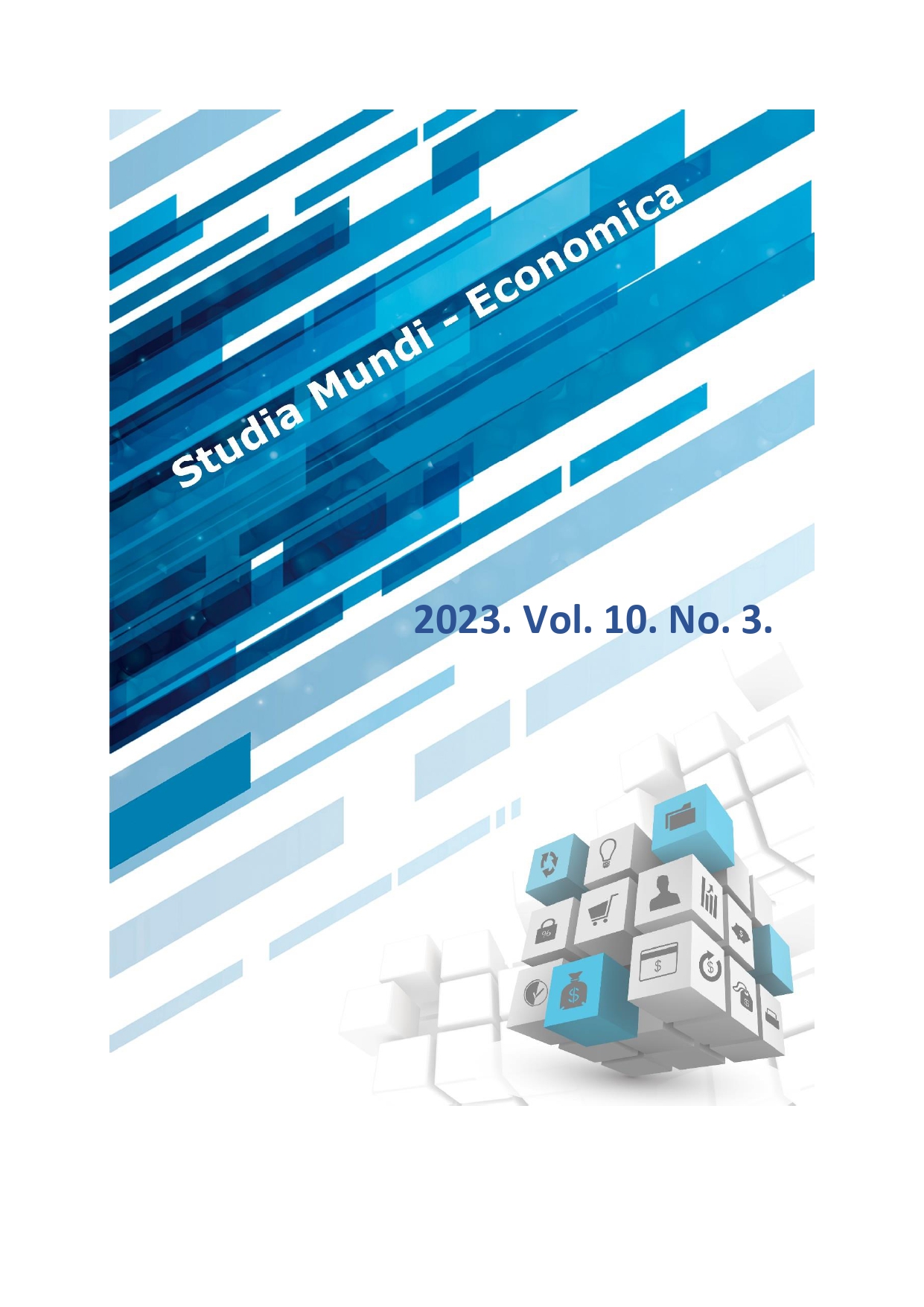Development of the structure of Hungarian gross electricity production between 2010-2021
DOI:
https://doi.org/10.18531/sme.vol.10.no.3.pp.17-32Keywords:
fossil energy, correlation, renewable energy, nuclear energy, electricity generationAbstract
The Hungarian electricity production is based on three pillars: fossil, nuclear and renewable energies. While domestic electricity production fell by about 6.5% between 2010 and 2020, gross electricity consumption increased by about 10%, which can be attributed to the decrease in production and the significant increase in electricity imports. The main reason for the increase in imports is that Hungary can buy cheap electricity from neighboring states. A positive development of the past period is that renewables has been playing an increasingly important role in electricity production. The increase in renewable energy consumption is connected with a decrease in the use of coal and gas, which is in line with EU commitments related to the reduction of greenhouse gas emissions and an important factor in the fight against climate change. In order to reduce the exposure of electricity production and use, it would be important to further expand renewable energies. In our article, we analyzed the structural transformation of Hungarian electricity production for the period between 2010 and 2020, supplemented by forecasts for the year 2021. During the research, we performed correlation calculation and a linear regression analysis, revealing the possible relationships between the energy carriers. The results show that an increase in solar energy production is accompanied by a decrease in coal-based electricity production, while an increase in natural gas-based electricity production is associated with a decrease in net electricity imports. the coming decades, it will be a serious challenge for Hungary to be able to provide its own electricity needs in a safe, economical and environmentally friendly way.
References
About Hungary (2022), FM: Electricity imports can reduce reliance on natural gas, Letöltés dátuma: 2023. 06. 10. forrás: https://abouthungary.hu/news-in-brief/fm-electricity-imports-can-reduce-reliance-on-natural-gas
Brodny, J. – Tutak, M. (2021a): The comparative assessment of sustainable energy security in the visegrad countries. a 10-year perspective. Journal of Cleaner Production, 2021, 317, 128427, https://doi.org/10.1016/j.jclepro.2021.128427
Brodny, J. – Tutak, M. (2021b): Assessing sustainable energy development in the central and eastern European countries and analyzing its diversity, Science of The Total Environment, 2021, 801, 149745, https://doi.org/10.1016/j.scitotenv.2021.149745
Eurostat (2023a): Hungary, Compelete energy balances, Gross available energy, Letöltés dátu-ma: 2023. 05. 10. forrás: https://ec.europa.eu/eurostat/databrowser/view/NRG_BAL_C__custom_3069522/default/table?lang=en
Eurostat (2023b): Hungary, Compelete energy balances, Gross electricity production, Letöltés dátuma: 2023. 05. 10. forrás: https://ec.europa.eu/eurostat/databrowser/view/NRG_BAL_C__custom_3069534/default/table?lang=en
Eurostat (2023c): Hungary, Compelete energy balances, Renewable Gross electricity production, Letöltés dátuma: 2023. 05. 21. forrás: https://ec.europa.eu/eurostat/databrowser/view/NRG_BAL_C__custom_3070543/default/table?lang=en
Eurostat (2023d): Complete energy balances, Standard international energy product classification, Letöltés dátuma: 2023. 05. 21. forrás: https://ec.europa.eu/eurostat/databrowser/bookmark/4a62a227-6e3d-4b9c-b49d-e28abd643ef2?lang=en
Győri, K. (2020): Az igazságos energiaátmenet a szénrégiókban - A szénkivezetés társadalmi hatásai, Energiaklub 2020, Letöltés dátuma: 2023. 01. 31. forrás: https://energiaklub.hu/files/study/Az%20igazs%C3%A1gos%20energia%C3%A1tmenet%20a%20sz%C3%A9nr%C3%A9gi%C3%B3kban_Energiaklub.pdf
Kiss, M. V. – Hetesi, Zs. – Kiss, T. (2016): Issues and solutions relating to Hungary's electricity system, Energy, 2016, 116, 329–340, https://doi.org/10.1016/j.energy.2016.09.121
Kovács, G. (2020): A kormány szerint az atomenergia a nyerő, csak Paks II árát hagyták ki, az egyenletből, HVG, 2020.01.22., Letöltés dátuma: 2023. 05. 10. forrás: https://hvg.hu/gazdasag/20200122_energiastrategia_klima_paks_atomenergia
KSH (2022), Letöltés dátuma: 2023. 05. 10. forrás: https://www.ksh.hu/stadat_files/ene/hu/ene0008.html
KSH (2023): Bruttó villamosenergia-termelés, Letöltés dátuma: 2023. 05. 21. forrás: https://www.ksh.hu/stadat_files/ene/hu/ene0009.html
Lipták, R. – Hadházi, T. (2021): A villamosenergia-felhasználás változása, Multidiszciplináris tudományok, 11. kötet. (2021) 3 sz. pp. 167–174, https://doi.org/10.35925/j.multi.2021.3.19
Major, A. (2020): A világon példátlan szabályokkal lehetetleníti el a szélenergiát Magyarország, Portfólió, 2020, Letöltés dátuma: 2023. 06. 30. forrás: https://www.portfolio.hu/gazdasag/20210423/a-vilagon-peldatlan-szabalyokkal-lehetetleniti-el-a-szelenergiat-magyarorszag-479054
Munkácsy, B. – Kádár, P. (2016): "Seeking the sustainable power mix for Central Europe," 2016 IEEE 14th International Symposium on Intelligent Systems and Informatics (SISY), Subotica, Serbia, 2016, pp. 257–262, https://doi.org/10.1109/SISY.2016.7601508
OAH (2023): Országos Atomenergia Hivatal honlap, Letöltés dátuma: 2023. 05. 31. forrás: http://www.haea.gov.hu/web/v3/oahportal.nsf/web?openagent
OVF (2023): Országos Vízügyi Főigazgatóság honlap, Letöltés dátuma: 2023. 05. 31. forrás: http://www.ovf.hu/
Robinson, G. M. (2020): Statistics, Overview, International Encyclopedia of Human Geography (Second Edition), Elsevier, 2020, Pages 29–48, forrás: https://doi.org/10.1016/B978-0-08-102295-5.10430-5
Siksnelyte, I. – Zavadskas, E.K. (2019): Achievements of the European Union Countries in Seeking a Sustainable Electricity Sector. Energies 2019, 12, 2254. https://doi.org/10.3390/en12122254
Sulich, A. – Sołoducho-Pelc, L. (2021): Renewable Energy Producers’ Strategies in the Vise-grád Group Countries. Energies 2021, 14, 3048. https://doi.org/10.3390/en14113048
Szeberényi, A. – Rokicki, T. – Papp-Váry, Á. (2022): Examining the Relationship between Renewable Energy and Environmental Awareness. Energies 2022, 15, 7082. https://doi.org/10.3390/en15197082
Taylor, R. (1990): Interpretation of the Correlation Coefficient: A Basic Review. Journal of Diagnostic Medical Sonography. 1990;6(1):35–39. https://doi.org/10.1177/875647939000600106
Downloads
Published
Issue
Section
License
Copyright (c) 2023 Bozsik Nándor, Bozsik Norbert, Tánczos Tamás

This work is licensed under a Creative Commons Attribution-NonCommercial-NoDerivatives 4.0 International License.
A folyóirat Open Access (Gold). Cikkeire a Creative Commons 4.0 standard licenc alábbi típusa vonatkozik: CC-BY-NC-ND-4.0. Ennek értelmében a mű szabadon másolható, terjeszthető, bemutatható és előadható, azonban nem használható fel kereskedelmi célokra (NC), továbbá nem módosítható és nem készíthető belőle átdolgozás, származékos mű (ND). A licenc alapján a szerző vagy a jogosult által meghatározott módon fel kell tüntetni a szerző nevét és a szerzői mű címét (BY).






